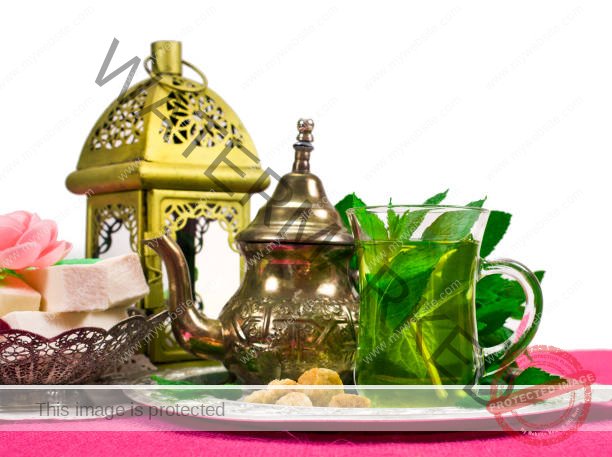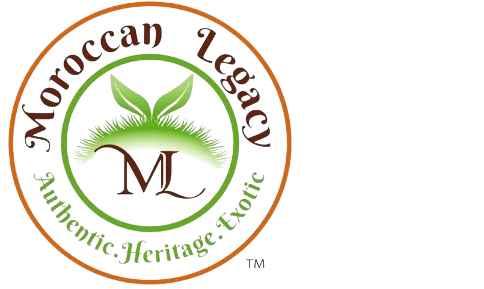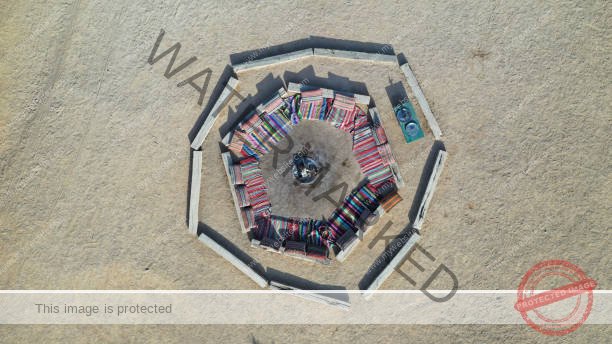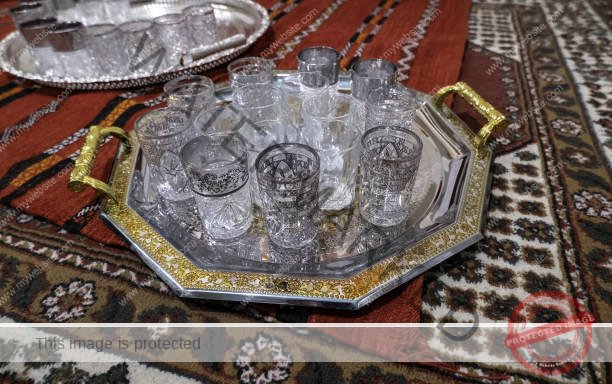Moroccan Tea Etiquette
It can be described that place as in Morocco, where in each morning the medina is so crowded and people are talking with each other and you can smell the spices around you. As you’re invited into a local home or shop, you’re about to experience one of the most cherished traditions in Moroccan culture: mint tea. Moroccan tea etiquette is not a recipe; it is a tradition of Moroccan hospitality that represents respect and appreciation of the present company.
Here is the ultimate Moroccan tea etiquette guide dedicated to this amazing drink, its production, preparation, and the traditions that come with it. It matters most if you are going to Morocco and planning to taste Moroccan tea etiquette there or if you want to feel Moroccan style tea parties in your own country. Knowledge about Moroccan tea etiquette will enhance your vision towards this custom.
The Origin and Importance of Moroccan Mint Tea
Before anyone goes into the details of Moroccan Tea Etiquette, it is vital to appreciate the background and social extension of mint tea in Morocco. Tea arrived in Morocco in the 18th century, brought in by British merchants, but it was only from the mid-19th century that it spread all over the country.
Maghrebi mint tea, or Moroccan whiskey, which is well, without alcohol, became an inalienable part of daily life in Morocco. Certainly, it is not only a drink, but it is considered characteristic of Moroccan people and an important element of their intercourses. As in any acting occasion, from a family gathering to negotiation meetings, the preparation and serving of tea have always been regarded as having close connections with forming relations and receiving guests.

The Art of Preparation: Moroccan Tea Etiquette in Action
Ingredients and Tools
To properly observe Moroccan tea etiquette, you’ll need the following:
- Green tea, which may be gunpowder tea
- Fresh mint leaves
- Sugar (although originally cones but powdered is also effective)
- An important article is a berrad, which is a Moroccan teapot.
- Small glass cups
- A serving tray
The preparation process
- Warming the Pot: The first step is to wash the berrad in warm water so that it can warm up.
- Adding the Tea: Pour a lot of green tea leaves into the pot. The measure has to do with the servings, but on average, it is one tablespoon per cup.
- The First Rinse: First, add a little hot water over the tea leaves, rotate the tea leaves, and then drain this water. This process, also called “awakening of the tea,” helps eliminate bitterness in the cup.
- Steeping: Pour the boiling water into approximately half of the pot and let it simmer for at least a minute or two.
- Adding Mint and Sugar: Put in a large pinch of fresh mint and sweeten to taste. Moroccan tea was traditionally very sweet, but remember to add as per taste.
- The Final Brew: Add more boiled water into the pot and wait it for a few minutes more.
- The Pour: This is where Moroccan Tea Etiquette is really most effective. The tea is poured with the ing and falling straight on the glass and at least a foot high. This stirs the tea, forming a foam on the tea’s surface and for an improved taste.
- The Three-Pour Rule: The tea is supposed to be passed between the pot and a glass some three times in the traditional Moroccan Tea Etiquette. This helps in making sure that all the flavors blend well with one another and the sugar has well dissolved.
Serving and Drinking: The Social Aspects of Moroccan Tea Etiquette
The Role of the Host
In Moroccan tea etiquette, the host is very important. That is their equivalent of washing the dishes; the activity is regarded as a privilege since it involves preparing the tea. In most cases, the host tries the tea first prior to presenting it to the guests.
Serving Order
When serving tea in a group setting, Moroccan tea etiquette dictates a specific order:
- The most honored guest is the first to receive his meal.
- Then the tea is offered to the oldest people being present.
- The service proceeds in a sequence of rank or age.
- In most of the events, as the host, you should serve yourself last.
Please accept the tea and drink the tea.
While being served, it is proper etiquette to hold the glass without drinking until anyone else who is being served has finished. Pick up the glass in your right hand only, as the left hand is considered unfit to touch anything from Morocco.
When using the glass, it is expected that one doses it at least three times before putting down the glass. In Moroccan Tea Etiquette, it’s said that:
- The first glass is as bitter as life; the author explains that life can be bitter.
- The second is as strong as love.
- The third message is as tender as death.
This poetry really echoes the gradual infusion of sugar into the tea; the more it is poured, the more it sweetens.
Moroccan Tea Etiquette in Different Settings
Home Visits
If you ever receive an invitation to a Moroccan house, then prepare to be met with mint tea. Declining this offer is politically incorrect because it is an act of courtesy. At worst, it’s important to accept at least a small portion of it, even if you are not a fan of drinking.
Business Meetings
In business environments, Moroccan tea etiquette is also used, but more formally. The beverage most commonly used may be tea, which may be offered at the start of a meeting so as to encourage discussion.
Cafes and Restaurants
Although the total tea ceremony may not be carried out in eating places, most cafes and restaurants offer Moroccan mint tea in the conventional manner. Do not be surprised to find your server pouring tea from this height of the tea pot.
Modern Adaptations of Moroccan Tea Etiquette
While traditional Moroccan tea etiquette remains strong, modern life has brought some adaptations:
- At most homes or workplaces, due to the busyness of activities, tea bags may be preferred over the leaves.
- In this case, some consumers are using less sugar or even choosing an option that is healthier than sugar.
In some SC contexts and particular living environments, water heating could be done by an electric kettle in lieu of conventional charcoal brasiers.
Still, the type of Moroccan tea etiquette—hospitality, respect, and social relationships—is preserved in its essence every day.
Bringing Moroccan Tea Etiquette into Your Home
Even if you’re not in Morocco, you can incorporate elements of Moroccan tea etiquette into your own tea-drinking habits:
- Popular choices of glasses can be retained while investing in a traditional Moroccan teapot.
- Try to pour the tea right from the kettle (over a sink, at least initially!).
- Drink tea often, prepare tea for several people at a time, and let friends or family help.
- Unlike the coffee break, the tea ceremony should be taken slowly and accompanied by conversation.
Conclusion
Moroccan Tea Etiquette is not simply a protocol of preparing to present tea; it is a window into the Moroccan society, beliefs, and life. The preparation of mint tea down to how it is consumed remains one of the true representatives of Morocco’s warm reception.
If you’re relaxing with a cup of tea in a riad in Marrakech like I do or trying to make it at home, knowledge of Moroccan tea etiquette lets you join millions of people who have been entertaining and connecting with others for generations. So the next time you prepare a pot of mint tea, remember: it’s not only creating a drink; you are maintaining a tradition that is dear to everyone.
Thus, everyone can have Moroccan legendary hospitality and a cup of sweet mint tea closer by accepting Moroccan tea etiquette.
FAQs
However, it should be asked: Is it impolite to decline if an offer of tea is made in Morocco?
In Moroccan tea etiquette, latte can be offending if you don’t take it as it represents a symbol of hospitality. If you don’t want tea or coffee, the best thing to do is to take a small portion and just taste it so that you can show appreciation.
Why is Moroccan tea served from such a height?
Tea pouring from a height is an integral part of Moroccan Tea Etiquette. It serves to mix the tea for possible achievement of a thin layer of foam on the tea, which is both to taste and to the appearance more desired. It is also useful in stirring the ingredients together properly as well as in cooling the tea slightly.


